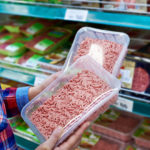Ozone for Food Safety?
I have just been given a food sterilization machine that’s supposed to clean the bacteria and pesticides off of vegetables, fruit and other foods. Water from the machine is said to sterilize drain boards, cutting boards and such. Is this for real?
Andrew Weil, M.D. | November 9, 2007

I haven’t tried the new food sterilization system, but I’ve read about it. As I understand it, you put the food you want to clean into a bowl that comes with the machine, add tap water and then hook the bowl up to the machine itself, which then infuses the water with ozone. After a few minutes, the food supposedly is 99.9 percent free of bacteria and almost all pesticide residues.
Ozone, a highly reactive form of oxygen, has long been used as a water sanitizer, and ozone-infused cold water is now widely used by the food preparation industry to clean equipment and surfaces that come in contact with food. This eliminates the need for sterilization with scalding water or chlorine.
Ozone is said to be 50 percent more powerful and to act 3,000 times faster than chlorine at 100 times the strength. If it works as well as advertised on bacteria such as salmonella and E. coli, protozoa such as giardia and cryptosporidium and viruses such as those that cause hepatitis, it should go a long way in the direction of food safety. You’re also supposed to use ozone-infused water from the machines to clean everything from countertops and stoves to children’s toys and pacifiers. The water also is promoted as a way to remove stains and mold and mildew and to deodorize. That would be a big plus if it really works.
This new commercial trend was set in motion by FDA approval in 2001 of ozone as an additive to kill food-borne pathogens, a decision that enabled food processors to use ozone in their plants. Since then, the Lotus Sanitizing System designed for home use was introduced and named one of the "Best Inventions of 2006" by TIME Magazine. It has gotten a lot of enthusiastic press elsewhere.
As far as safety is concerned, the ozone in the infused water in the machine or used for cleaning breaks down and is not a problem. My concern would be how much, if any, leaks into the air while the machine is in use, since ozone is toxic. The manufacturer says that any ozone that leaks remains reactive for only 15 minutes and amounts to only a tiny fraction of the 0.3 parts per million at which ozone can cause throat and lung irritation, and an even smaller fraction of the 0.5 parts per million that triggers ozone-associated smog alerts in Los Angeles. And ozone does break down quickly to ordinary oxygen. According to the manufacturer, any ozone leaked from these systems would break down long before it could reach and benefit the diminishing ozone layer.
The system sounds good to me, but I wonder whether enough people will pay the $170-plus cost for it to catch on.
Andrew Weil, M.D.










